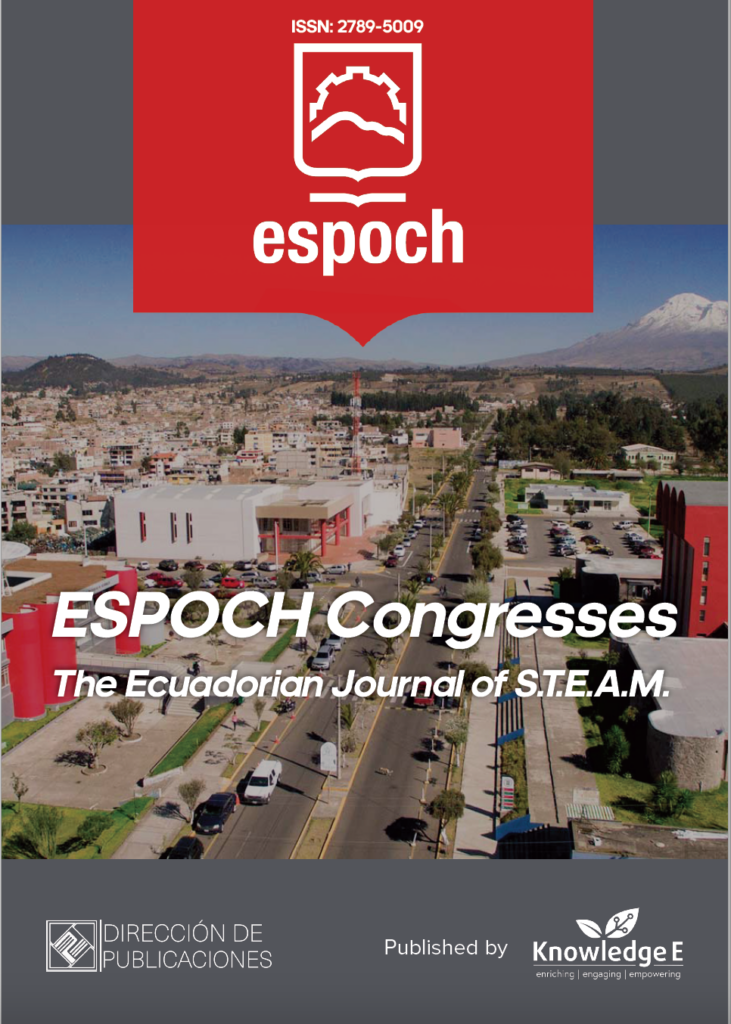
ESPOCH Congresses: The Ecuadorian Journal of S.T.E.A.M.
ISSN: 2789-5009
Leading Ecuadorian research in science, technology, engineering, arts, and mathematics.
Automated Weighing System for the Health Care of Guinea Pigs (Cavia Porcellus)
Published date:Sep 02 2021
Journal Title: ESPOCH Congresses: The Ecuadorian Journal of S.T.E.A.M.
Issue title: Volume 1, Issue 5
Pages:1451 - 1458
Authors:
Abstract:
It is estimated that in Nariño (Colombia) there are 20,000 small guinea pig farms, which provide livelihoods for thousands of families and generate monthly transactions of a thousand million Colombian pesos. This sector has a trend of constant growth. However, the production of guinea pigs (Cavia porcellus) is done by hand due to the lack of technification of this sector. A problem identified in the breeding of these animals is weight loss, which can be caused by injuries in the traditional weighing process. In this process, the animal is immobilized and manually taken to the scale, which can cause injuries, stress, weight variations, reduced mobility and, in the worst cases, death. Being aware that these problems could be solved through technology, this article presents the design of an automated weighing and identification system that allows producers to carry out the weighing process without human intervention, with the purpose of safeguarding the animal’s health. The article also discusses the parameter design and information about guinea pigs, from a structural and operative point of view. Some experimental results are shown which gave rise to a patent. Finally, conclusions about the reach and use of the device are presented.
Keywords: automated weighing system, RFID tagging, guinea pigs, Cavia porcellus.
RESUMEN
Se estima que en Nariño (Colombia) existen 20.000 criaderos pequeños de cuyes que son la base económica de miles de familias los cuales producen transacciones mensuales por mil millones de pesos colombianos. Un sector que está en constante crecimiento. Sin embargo, la producción de cuyes (Cavia porcellus) se realiza de forma artesanal debido a la falta de tecnificación. Una problemática identificada en la cría de estos animales es la pérdida de peso que puede ocasionarse por lesiones causadas en el pesaje de forma tradicional. En este proceso, el animal es inmovilizando y llevado manualmente hacia la báscula, lo que puede ocasionar lesiones, reducción de movilidad y hasta la muerte. Conscientes que dichas problemáticas podrían solucionarse a través de la tecnología, en este artículo se plantea el diseño de un sistema de pesaje e identificación automatizado que permita a los productores realizar el proceso de pesaje sin intervención humana, con el propósito de mantener el estado de salud del animal. Para esto se presenta la información recopilada y parámetros establecidos para realizar el diseño, desde un punto de vista estructural y operativo. Además, se presentan algunos resultados experimentales que dieron origen a una Patente del dispositivo, y finalmente algunas conclusiones sobre el alcance y uso del dispositivo propuesto.
Palabras claves: sistema de pesaje automatizado, identificación RFID, cuyes de granja, Cavia porcellus.
References:
[1] Quijandria B, Muscari J, Robison OW. Selection in guinea pigs: III. Correlated responses to selection for litter size and body weight. Journal of Animal Science. 1983;56(4):829–832.
[2] Rodríguez H, Gutiérrez G, Palomino M, Hidalgo V. Características maternales al nacimiento y destete en cuyes de la costa central del Perú. Revista de Investigaciones Veterinarias Del Perú. 2015;26(1):77–85.
[3] Yamada G, Bazán V, Fuentes N. Parámetros productivos de cuyes G en la costa central del Perú. Revista de Investigaciones Veterinarias Del Perú. 2018;29(3):877–881.
[4] Castro HP. Sistemas de crianza de cuyes a nivel familiar-comercial en el sector rural. Utah: Benson Agriculture and Food Institute; 2002.
[5] Quispe AS. Manejo técnico de la crianza de cuyes en la sierra del Perú. Arequipa; 2015.
[6] de Zaldívar, CL. Crianza de cuyes. Lima; 1994.
[7] Holandeses asesoran a Pasto en la cría de cuyes. Redacción Periódico El Tiempo. 2015 February 9. Available from: https://www.eltiempo.com/archivo/documento/CMS-15222239.
[8] Burgos W, Solarte C, Cerón M. Efecto del tamaño de camada y número de parto en el crecimiento de cuyes (Cavia porcell us Rodentia: caviidae). Revista Lasallista de Investigación. 2010;7(2):47–55.
[9] Elijah O, Rahman TA, Orikumhi I, Leow CY, Hindia MN. An overview of Internet of Things (IoT) and Data Analytics in Agriculture: Benefits and challenges. IEEE Internet of Things Journal. 2018;5(5):3758–3773.
[10] Zambrano O. Costos de producción de crianza artesanal y tecnológica del cuy (Cavia porcellus) en Cajamarca [Tesis de Maestría]. 2015.
[11] PCE Ibérica S.L. Instrumentación. Balanza para animales PCE PS 75XL. 2018.
[12] PCE Ibérica S.L. Instrumentación. Balanza PCB 6000-0. 2018.
[13] PCE Ibérica S.L. Instrumentación. Balanza PCE-PS 150XL. 2018.
[14] Liu T, Teng G, Fu W. Research and development of pig weight estimation system based on image, 2011. International Conference on Electronics, Communications and Control, ICECC 2011 - Proceedings. IEEE. 2011.
[15] Vaughan J, Green PM, Salter M, Grieve B, Ozanyan KB. 2017. Floor sensors of animal weight and gait for precision livestock farming. Proceedings of IEEE Sensors; 2017 December 1–3.
[16] Farooq MS, Riaz S, Abid A, Abid K, Naeem MA. 2019. A Survey on the Role of IoT in Agriculture for the Implementation of Smart Farming. IEEE Access, 7, 156237–156271.
[17] Liu T, Teng G, Fu W. Research and development of pig weight estimation system based on image. 2011 International Conference on Electronics, Communications and Control, ICECC 2011 – Proceedings. p. 2774–2777.
[18] Harper BD. Digital farming: What does it really mean? CEMA - Europen Agricultural Machinery; 2017. pp. 1–9.
[19] Oshiro HR. Tecnificación de la crianza de cuyes para el mercado Nacional. Lima; 2008.
[20] Guadalupi A. Schematics Ardun. 2019. Available from: https://content.arduino.cc/assets/MEGA2560_Rev3e_sch.pdf